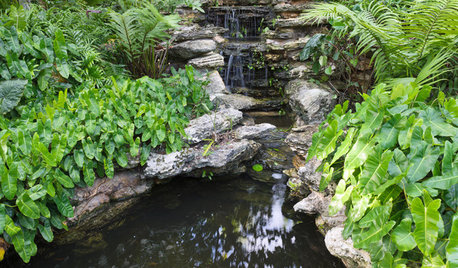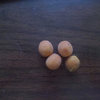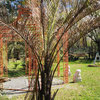Jubaea Chilensis
butiaman
14 years ago
Related Stories

LANDSCAPE DESIGNRecipe for Tropical Edible Garden Style
Appeal to exotic good taste with fruit trees, palms and tropical look-alikes in your temperate-climate garden
Full StoryMore Discussions
I was thinking of buying a 5 gallon jubeae palm.It's on ebay and the seller said It would survive here.Has anybody tried one of these palms?There not suppost to like humidity in summer,thats not been a problem here in the past 5yrs.It doesent get as hot in summer as it use to either.We only hit *90f three or four times this past summer.The seller said there cold hardy to *12f,and doesent mind wet winters,is this correct?If anybody has had experience with this palm,please let me know what you think?They are $60 dollars for a five gallon,pricey for me,Im just a simple man with little funds to spend on landscape plants.I dont want to waste my money.Can anybody give me advice on if I should buy one or not?



xentar_gw
User
Related Professionals
Camas Landscape Architects & Landscape Designers · Folsom Landscape Architects & Landscape Designers · Lowell Landscape Architects & Landscape Designers · Salem Landscape Architects & Landscape Designers · Barrington Landscape Contractors · Forest Hills Landscape Contractors · Indio Landscape Contractors · Medford Landscape Contractors · Morrisville Landscape Contractors · Severna Park Landscape Contractors · Goldenrod Landscape Contractors · Marietta Window Contractors · Compton Window Contractors · Emeryville Window Contractors · Hialeah Gardens Window Contractorstropicalzone7
dcleaves
Central_Cali369
User
tropicalzone7
butiamanOriginal Author
steve_nj
don_licuala
Steve
butiamanOriginal Author
tropicalzone7
butiamanOriginal Author
dcleaves
User
butiamanOriginal Author
User
butiamanOriginal Author
alex_7b
plantaholic
tropicalzone7
butiamanOriginal Author
plantaholic
butiamanOriginal Author
User
butiamanOriginal Author
james760
neonrider
tropicalzone7
neonrider
LagoMar
User